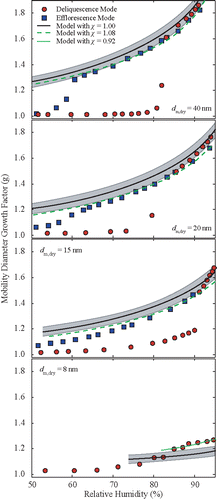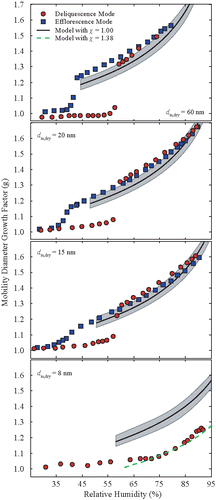Figures & data
Table 1. Density of the dry particles , as well as density of droplet
, water activity aw and surface tension
of the solution droplets.
Figure 1. Mobility-diameter growth factors of KBr nanoparticles. Experimental growth factors are shown by the data points: circles correspond to measurements recorded during deliquescence-mode experiments, and squares during efflorescence-mode experiments. In both cases the particles were generated by the vaporization-condensation technique. Lines show the growth factors of the theoretical model, including the Kelvin effect and a shape correction factor. Models are evaluated for 10 < wt < 80%.

Table 2. Deliquescence and efflorescence RH values and growth factors at 75% RH of KBr, KCl, and KI nanoparticles.


